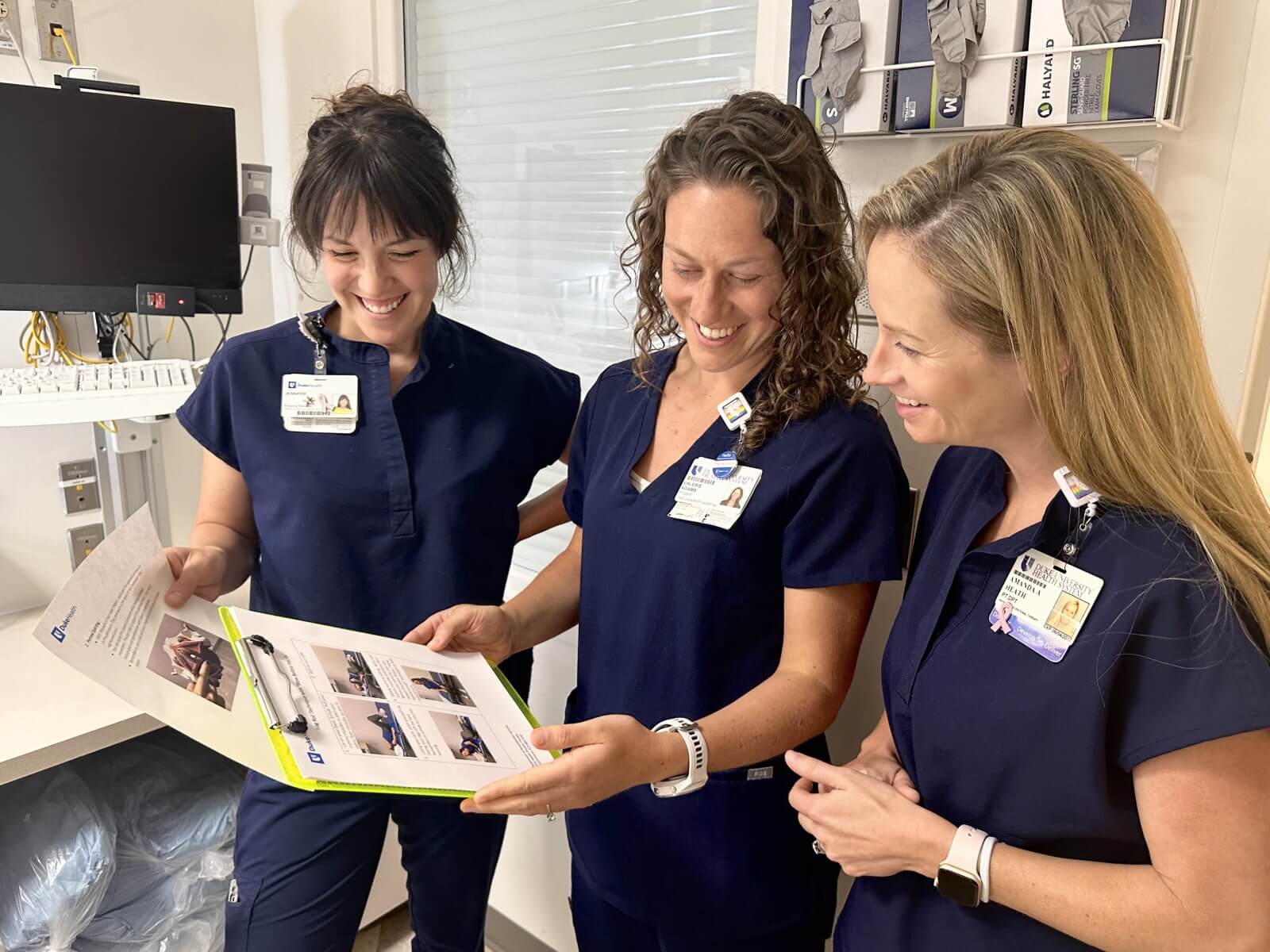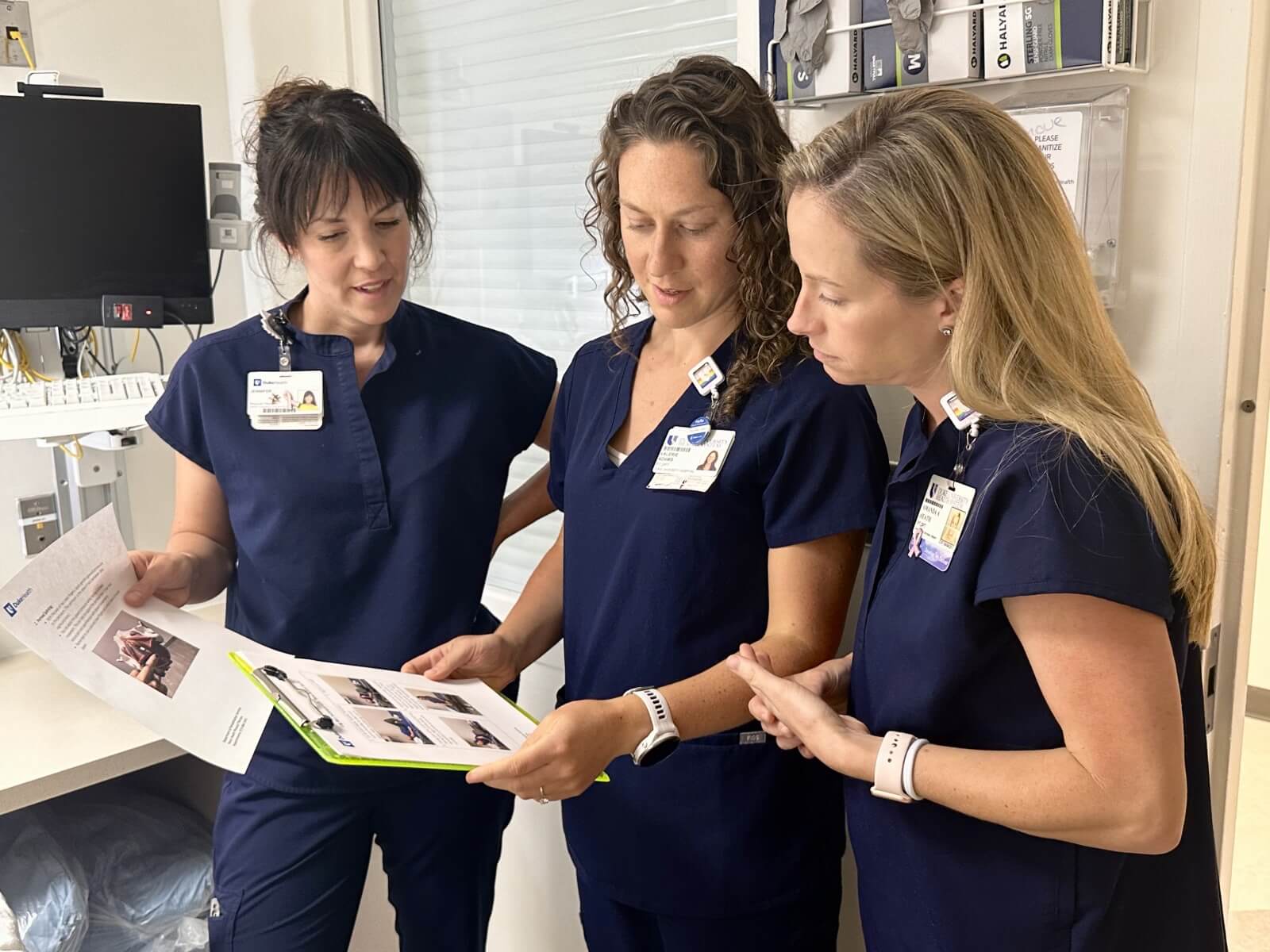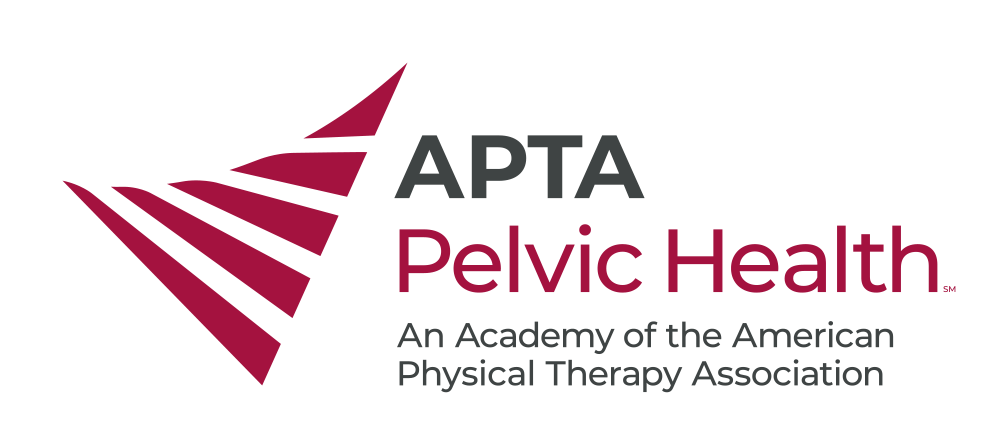Implementation of an Acute Care OB and Postpartum Telehealth Program at Duke Health
Across the country, there is a growing interest in offering acute care physical therapy for women after delivery. The enthusiasm behind this is contagious!
When it comes time to sit down and start the planning process, many questions emerge:
- Where do we start?
- How do we get past all the barriers?
- How do we measure success?
…and so on.
At Duke Health, we had those same questions (plus a lot more!) when we began outlining our inpatient OB and postpartum PT telehealth program. Through building and fostering relationships; identifying PT management champions, Ob/Gyn management champions, and scheduling champions; identifying and addressing barriers early on; expanding the physical therapy team comfortable treating pregnant and postpartum patients for MSK concerns; creative use of Telehealth; and a whole lot of patience, we were able get our program up off the ground and running. We are proud of its success and proud to stand alongside many thriving programs in the country.
Initial Program Development
We started the inpatient OB physical therapy service at Duke Health in August 2023. The planning initiated at least two years prior to that after one of our Ob/Gyns reached out with a request to work on a quality improvement project. One of his patients asked about seeing pelvic floor physical therapy in the hospital as she had previously had this service in a different country. Fortunately for us, this meant we identified our Ob/Gyn champion early on.
Addressing Concerns/Barriers
Prior to initiating inpatient pelvic health services, it was important to communicate with key stakeholders including: PT leadership, Ob/Gyn leadership, and nursing leadership. Many meetings ensued. We were inundated fairly quickly with various concerns and potential barriers. We also learned fairly quickly that in order to implement the program we first needed to respond to the raised concerns. One early concern was voiced by our Ob/Gyn team: “If we move outpatient PT staff to cover the inpatient pelvic health program, who will see our outpatient pregnant and postpartum patients? There is already a long wait to be seen.” Now, they had a good point. So, we pivoted. We hit pause temporarily on the inpatient pelvic health program and instead put our efforts into increasing the number of physical therapy staff who felt comfortable treating patients during pregnancy and postpartum for MSK complaints. We designed a didactic and lab training which we offered, and continues to be offered annually, as an in-service to interested outpatient staff. Additionally, we modified our scheduling flow to allow improved patient access to outpatient physical therapy services. By pivoting with creativity and adaptability, we were able to assuage concerns and overcome barriers.

Inpatient OB PT Services
In August 2023 we initiated a tiered increase in inpatient pelvic health service coverage. One of our outpatient pelvic health physical therapists started covering the unit 5 hours per day, 2 days per week. Coverage increased from there. We hired our first full-time physical therapist dedicated to exclusively covering our postpartum unit in October 2024. We have additional PT coverage 3 days a week to meet current needs. We exported the program to our sister hospital in January 2025 and continue to enjoy the program’s growth!
Telehealth Postpartum PT Services
Another aspect of our program is our 2-week postpartum PT telehealth program. This was based on the recent change in ACOG guidelines1 which recommend that all postpartum patients should have a touch point with a maternal care provider within 3 weeks following delivery. The telehealth visit is offered to any patient who has been seen by physical therapy in the inpatient setting. For individuals who do not have telehealth coverage or are uninsured, we complete a pro-bono telephone call. We screen for red flags using the AWHONN Post-Birth screening tool, symptoms of pelvic floor dysfunction, discuss musculoskeletal concerns or pain postpartum, assess childcare and environment ergonomics, and provide education and resources.
Measuring Success

We can measure success in many different ways. We have reviewed Qualtrics survey scores for the postpartum unit and compared those with other units in our hospital and with those across the country. We have received direct, positive feedback from patients, the nursing team, and the Ob/Gyn team. Financially, we can measure success by analyzing red flags caught by our postpartum telehealth team and changes in hospital readmission rates.
Each health care system presents its own distinct challenges when developing and implementing an inpatient OB physical therapy program. Through our experience, we’ve found that successful program development requires unwavering dedication, creativity, adaptability, resourcefulness, strong relationship-building, and a great deal of patience.
Authors
Valerie Adams, Amanda Heath, Lisa Massa, and Jennifer Thornton-Jones are board-certified clinical specialists in Women’s Health Physical Therapy, with additional certifications and expertise in oncology and lymphedema care. All four practice within the Duke University Health System, where they specialize in pelvic health, women’s health, and oncology, while also serving as leaders/mentors for Duke’s Women’s Health Residency Program and as educators for regional DPT programs. They are passionate about advancing perinatal and pelvic health care, expanding access to physical therapy, and sharing knowledge through teaching, presentations, and professional service. Collectively, their work emphasizes improving care for pregnant and postpartum patients and promoting excellence in women’s health and oncology rehabilitation.
Valerie Adams, PT, DPT, CLT, Board-Certified Women's Health Clinical Specialist
Amanda Heath, PT, DPT, CLT, Board Certified Women's Health Clinical Specialist, Board Certified Oncologic Clinical Specialist

Lisa Massa, PT, MPT, CLT, Board Certified Women's Health Clinical Specialist, Board Certified Oncologic Clinical Specialist

Jennifer Thornton-Jones, PT, DPT, CLT, Board Certified Women's Health Clinical Specialist, Board Certified Oncologic Clinical Specialist

References:
1. ACOG Committee Opinion No. 736: Optimizing Postpartum Care. Obstet Gynecol. 2018 May;131(5):e140-e150. doi:10.1097/AOG.
Image Credit: All photos courtesy of Duke Obstetrics & Gynecology, Office of Communications and Marketing.


